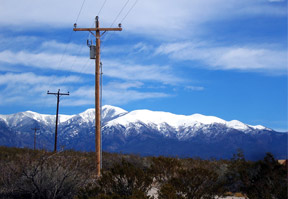If there’s one company with the right platform it could be GE Software.
This is a terrible confession, I know, but I can’t stand change. The idea of disruptive technology fills me with horror. What’s so great about constantly moving the goalposts? Whenever a tame analyst makes a guest appearance on a corporate video, he’ll invariably describe his new start up paymaster as “a game changer”.
Well, nuts to that, I say. What’s wrong with a bit of continuity and fine tuning? That’s how I’d like to see the Internet of Things progressing.
So the continuing success of companies like General Electric (GE) is massively reassuring. This is a company that survived every ‘paradigm shift’ since the 1880s, when Thomas Edison had the original ‘lightbulb moment’. It’s still ranked highly in the Fortune 500, with the 26th highest revenue and fourteenth highest profitability ratings in the US. And there isn’t a single member of its board with a goatee beard or a bean bag or a desperate urge to impress everyone that he’s the “smartest guy in the room”.

Call me old fashioned, but this is he sort of company that I want to guide us through the uncertainty and flux that the Internet of Things (IoT) will create.
GE’s vision of the IoT is the Industrial Internet, which has a nice, sensible ring to it. Remember all the nonsense that was spouted at the beginning of the first Internet wave? All those blowhards who predicted that IT would become the business and that nobody makes things any more. I can see that collective madness happening again, when the M2M industry and enthusiasts flood into the market desperate to make an impression with silly catchphrases and second concepts they don’t really understand.
In those circumstances, it is very dangerous partnering with the wrong company. Many UK companies, to take one example, lost fortunes over Internet Telephony, because it was massively over hyped and led by some rather dubious salesmen.
GE makes its money from solid dependable revenue sources like electricity, oil, gas, water, aviation, health, transport and health. Its software division (GE Software) is charged with fine tuning all the well established production processes to get more out of the existing infrastructures.
The plan for cutting wastage and boosting productivity is based on getting information from the machinery of each industry – by the oil pipelines, wind turbines and jet engines – and nipping problems in the bud quicker. For example, there are 5000 variables in a jet engine which GE software’s intelligent agents can monitor and manage.
For two year’s GE Software has been building applications using its own purpose built software creation system, Predix, that can be used in other divisions. GE Energy, for example, has managed to fine tune its processes to create a five per cent improvement in electricity yields from Wind turbines, simply by gathering intelligence about weather patterns and electricity flow and the performance of the turbines themselves. Small improvements in productivity translates into massive financial benefits, as a consequence of the sheer size of any supply chain.
“It’s not about replacing the big stuff every day. You can get much more out of the system just by tweaking the existing systems,” says Bill Ruh, GE Software’s vice-president. That five per cent productivity rise created a 20% profit boost for GE’s client.
In the two years since GE created its Industrial Internet strategy it has built a multi billion dollar revenue business that employs 10,000 software developers. A significant chunk of that income comes from its GE power grid business and it is in this area that a massive new opportunity has arisen to harmonise electricity flow and prices across Europe.
In February, the European Commission announced its new Energy Union Strategic Framework which, at the risk of over-simplifying, aims to create a much better cross border market for the use of electrical power. It is a massive challenge to create this but if we don’t, the commission estimates, the nations of the EC could overspend on power by a collective €590 million by 2050.
No, I’m not sure how they arrive at those figures either, but it is safe to say our stupid (as opposed to smart) grids are making us lose power and money on an industrial scale. That’s one change we do need to make. It sounds like a job for the Industrial Internet of Things.










